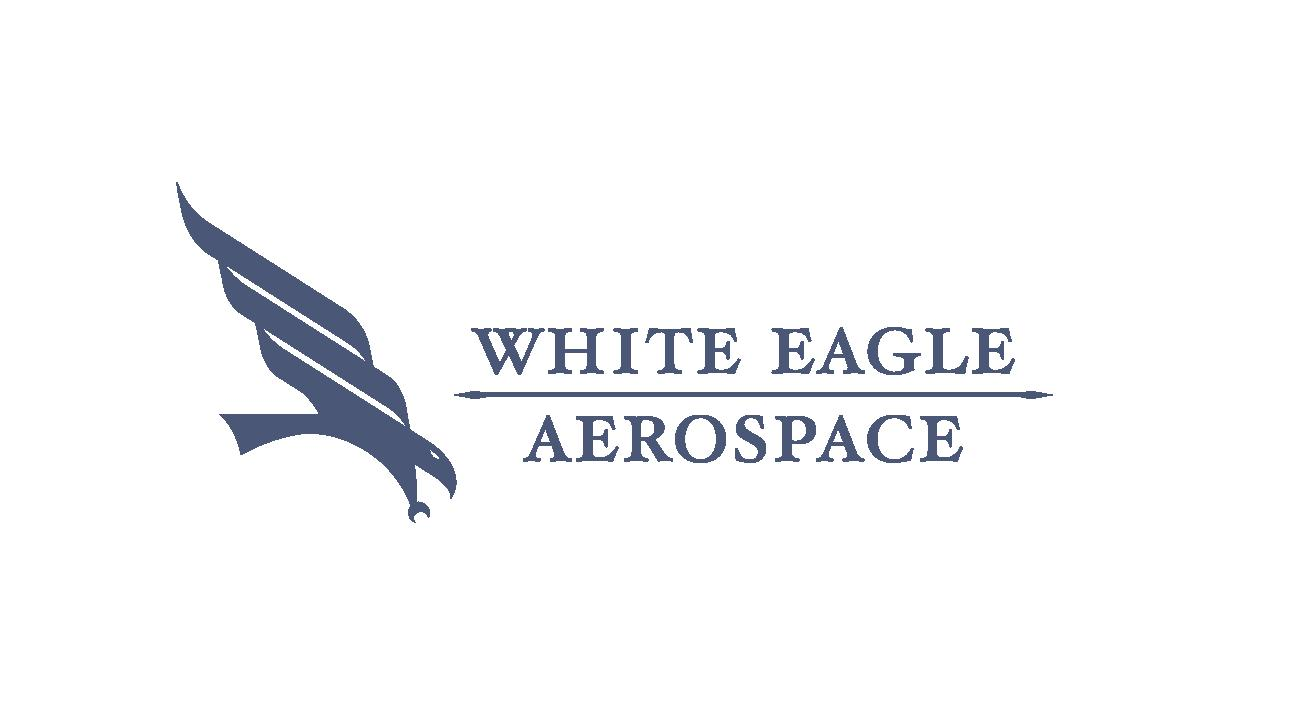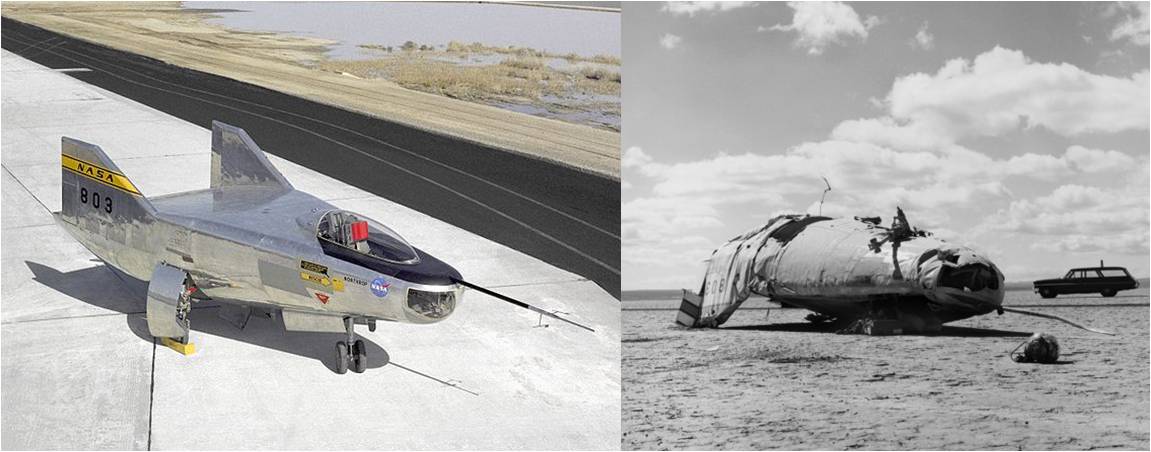
Forty-three years ago today, NASA’s experimental M2-F2 lifting body flight research aircraft was demolished in a horrific landing mishap on Rogers Dry Lake at Edwards Air Force Base. Although critically injured, NASA test pilot Bruce A. Peterson survived the mishap.
A lifting body is a wingless aircraft wherein the aerodynamic lift required for flight is derived solely from the fuselage. Interest in such a configuration stems from the type’s inherent suitability for lifting atmospheric entry from space. The primary attributes being favorable cross-range capability and aerodynamic heating performance.
Lifting body concepts date back to at least the 1950’s. From 1963 to 1975, both NASA and the United States Air Force conducted a number of manned lifting body flight research programs. The aircraft involved were the M2-F1, M2-F2, M2-F3, HL-10, X-24A and X-24B. All were flown out of Edwards Air Force Base between 1963 and 1975.
The favorable hypersonic flight performance of lifting bodies comes at a price. Specifically, lifting bodies are not particularly good subsonic aircraft from the standpoint of lateral-directional handling qualities. The type also falls like a rock in the approach and landing phase. Due to characteristically-low values of subsonic lift-to-drag ratio, touchdown speeds can exceed 250 knots.
The M2-F2 was the first of the heavy weight lifting bodies. It measured 22 feet in length and 9.4 feet in span. The aircraft had an empty weight of 4,630 pounds. The M2-F2 had boosted hydraulic 3-axis flight controls and a stability augmentation system. The vehicle was also configured with a quartet of hydrogen peroxide rockets rated at 400 pounds of thrust each.
On Wednesday, 10 May 1967, the M2-F2 (NASA S/N 803) fell away from the fabled B-52B (S/N 52-0008) launch aircraft at an altitude of 44,000 feet. NASA test pilot Bruce A. Peterson was at the controls of the M2-F2. This was Peterson’s 3rd flight in the M2-F2 and the aircraft’s 16th overall. It would be the last research flight for both.
The early part of the mission was unremarkable. Then the flight test gremlins made their presence known. Passing through 7,000 feet in a steep glide, Peterson pushed forward on the control column and brought the M2-F2 to quasi-zero angle-of-attack. The aircraft quickly entered a Dutch Roll with extreme, rapid lateral excusions.
Peterson increased angle-of-attack to arrest the wild lateral-directional motions of the M2-F2. However, he was no longer pointed toward Runway 18 on Rogers Dry Lake as intended. The ground was coming up rapidly and he would have to land the M2-F2 on a part of the lakebed that did not have the typical visual aids required for correctly judging height above surface level.
Peterson might have gotten himself and the M2-F2 on the ground in one piece except for the helicopter that now loomed directly ahead in his landing path. Not that it was the helicopter pilot’s fault. It was just that the M2-F2 had strayed so far from its intended flight path that the helicopter was suddenly a navigational hazard.
Managing to somehow avoid a collision with the flight support helicopter, Peterson now fired his landing rockets in an attempt to stay in the air a little longer. He then hit the landing gear switch. In 1.5 seconds the gear would be down and locked. Unfortunately, there was only one second of flight time remaining before touchdown.
As the M2-F2 contacted the lakebed at 220 knots, its main landing gear was jammed back up into the fuselage. That was the end of the ball game. The M2-F2 tumbled end-over-end across Rogers Dry Lake shearing off the canopy, main gear and right vertical tail. The battered and twisted airframe finally came to rest inverted on the lakebed.
Incredibly, rescue crews found Bruce Peterson still alive as they came upon the crash scene. He was even conscious, However, the pilot was terribly hurt. Peterson’s oxygen mask had been torn off as the M2-F2 tumbled six (6) times. He received severe facial injuries due to repeated impact with the lakebed surface. In addition, Peterson suffered a fractured skull, severe damage to his right eye and a broken hand.
Bruce Peterson came back from his brush with eternity. He needed extensive reconstructive surgery on his face and lost the sight in his right eye. Peterson served as a project engineer for a number of NASA flight programs and even flew as a Marine reservist. He later served as a safety officer on the B-2 flight test effort. Bruce Peterson passed away at the age of 72 on 01 May 2006.
For those who remember, “The Six-Million-Dollar Man” was a television series about a fictional test pilot who had been badly injured in an aircraft accident. In the storyline, the fictional character was “rebuilt” by doctors using bionic technology. Trivia buffs may be interested to know that the basis for “The Six-Million-Dollar Man” was Bruce Peterson’s M2-F2 experience.
For those that remember, the “The Six-Million-Dollar Man” was a televison series about a fictional test pilot who had been badly injured in an aircraft accident. In the storyline, the fictional character was “rebuilt” by doctors using bionic technology. Trivia buffs may be interested to know that the basis for “The Six-Million-Dollar Man” was Bruce Peterson’s terrifying M2-F2 crash.
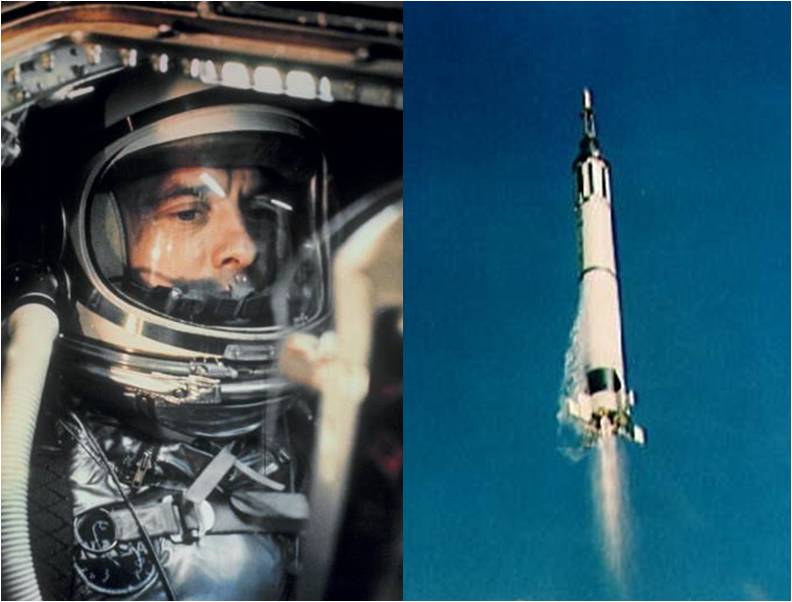
Forty-nine years ago this week, United States Navy Commander Alan Bartlett Shepard, Jr. became the first American to be launched into space. Shepard named his Mercury spacecraft “Freedom 7”.
Officially designated as Mercury-Redstone 3 (MR-3) by NASA, the mission was America’s first true attempt to put a man into space. MR-3 was a sub-orbital flight. This meant that the spacecraft would travel along an arcing parabolic flight path having a high point of about 115 nautical miles and a total range of roughly 300 nautical miles. Total flight time would be about 15 minutes.
The Mercury spacecraft was designed to accommodate a single crew member. With a length of 9.5 feet and a base diameter of 6.5 feet, the vehicle was less than commodious. The fit was so tight that it would not be inaccurate to say that the astronaut wore the vehicle. Suffice it to say that a claustrophobic would not enjoy a trip into space aboard the spacecraft.
Despite its diminutive size, the 2,500-pound Mercury spacecraft (or capsule as it came to be referred to) was a marvel of aerospace engineering. It had all the systems required of a space-faring craft. Key among these were flight attitude, electrical power, communications, environmental control, reaction control, retro-fire package, and recovery systems.
The Redstone booster was an Intermediate Range Ballistic Missile (IRBM) modified for the manned mission. The Redstone’s uprated A-7 rocket engine generated 78,000 pounds of thrust at sea level. Alcohol and liquid oxygen served as propellants. The Mercury-Redstone combination stood 83 feet in length and weighed 66,000 pounds at lift-off.
On Friday, 05 May 1961, MR-3 lifted-off from Cape Canaveral’s Launch Complex 5 at 14:34:13 UTC. Alan Shepard went to work quickly calling out various spacecraft parameters and mission events. The astronaut would experience a maximum acceleration of 6.5 g’s on the ride upstairs.
Nearing apogee, Shepard manually controlled Freedom 7 in all 3 axes. In doing so, he positioned the capsule in the required 34-degree nose-down attitude. Retro-fire occurred ontime and the retro package was jettisoned without incident. Shepard then pitched the spacecraft nose to 14 degrees above the horizon preparatory to reentry.
Reentry forces quickly built-up on the plunge back into the atmosphere with Shepard enduring a maximum deceleration of 11.6 g’s. He had trained for more than 12 g’s prior to flight. At 21,000 feet, a 6-foot droghue chute was deployed followed by the 63-foot main chute at 10,000 feet. Freedom 7 splashed-down in the Atlantic Ocean 15 minutes and 28 seconds after lift-off.
Following splashdown, Shepard egressed Freedom 7 and was retreived from the ocean’s surface by a recovery helicopter. Both he and Freedom 7 were safely onboard the carrier USS Lake Champlain within 11 minutes of landing. During his brief flight, Shepard had reached a maximum speed of 5,180 mph, flown as high as 116.5 nautical miles and traveled 302 nautical miles downrange.
The flight of Freedom 7 had much the same effect on the Nation as did Lindbergh’s solo crossing of the Atlantic in 1927. However, in light of the Cold War fight against the world-wide spread of Soviet communism, Shepard’s flight arguably was more important. Indeed, Alan Shepard became the first of what Tom Wolfe called in his classic book “The Right Stuff”, the American single combat warrior.
For his heroic MR-3 efforts, Alan Shepard was awarded the Distinguished Service Medal by an appreciative nation. In February 1971, Alan Shepard walked on the surface of the Moon as Commander of Apollo 14. He was the lone member of the original Mercury Seven astronauts to do so. Shepard was awarded the Congressional Space Medal of Freedom in 1978.
Alan Shepard succumbed to leukemia in July of 1998 at the age of 74. In tribute to this American space hero, naval aviator and US Naval Academy graduate, Alan Shepard’s Freedom 7 spacecraft now resides in a place of honor at the United States Naval Academy in Annapolis, Maryland.
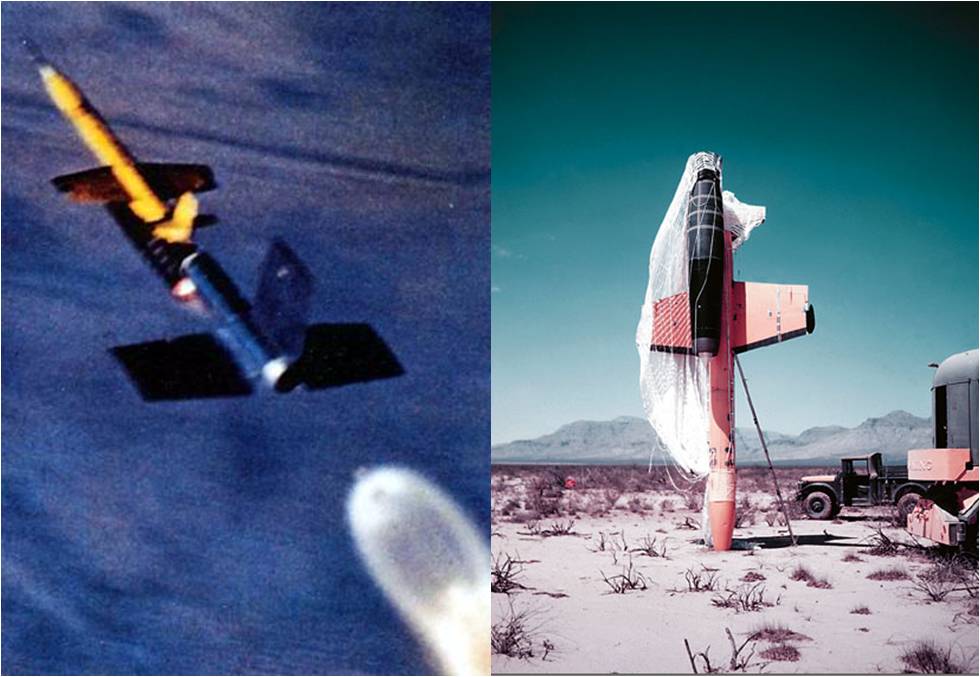
Fifty-nine years ago today, the first flight test of a full-scale Lockheed X-7A ramjet test vehicle took place near Alamogordo, New Mexico. However, the dreaded flight test gremlins prevailed on this occasion as the entire X-7 launch stack disintegrated shortly after drop from its USAF B-29 launch aircraft.
The inauspicious start to the X-7 flight test program on Thursday, 26 April 1951 was but a momentary bump in the road. Ultimately, that road would lead to significant technological progress in the development of ramjet propulsion systems. Approximately 130 flight tests involving the X-7 would be conducted between 1951 and 1960.
The beginning of the X-7 program dates back to December of 1946. At that time, the United States was on the cusp of an unprecedented period of frontiersmanship in the realm of high-speed flight. Among other needs, a flying testbed was required to perform ramjet propulsion flight research.
A ramjet is a form of airbreathing propulsion well suited for flight up to a Mach number of about 5. Unlike the turbojet, a ramjet contains no internal rotating machinery. Flow compression comes entirely from deceleration of the supersonic freestream. However, a ramjet cannot produce static thrust. Hence, it must be boosted to flight speed via another propulsion system such as a turbojet or rocket.
The X-7 was rocket-boosted to ramjet take-over conditions. Booster thrust was on the order of 100,000 pounds with a burn time of 5 seconds. Following booster separation, the type would fly on ramjet power until fuel exhaustion. The ramjet test article was slung under the belly of the X-7 airframe which made for an asymmetric vehicle configuration.
The entire X-7A-1 launch stack measured almost 33 feet in length and had a gross weight of about 8,000 pounds. Later variants such as the X-7A-3 and XQ-5 would be longer by 3 and 4 feet, respectively. However, their gross weight was about the same as that of the X-7A-1 configuration.
The X-7 was designed for reusability. Vehicle recovery was effected via a multi-segment parachute system. This feature afforded engineers the unique opportunity to make a post-flight inspection of each ramjet engine test article. These inspections of flight hardware made for a more reliable means of making needed propulsion system design improvements.
Typically, the X-7’s long conical nose penetrated several feet into the soil at landing. The result was that the X-7 airframe stuck out of the ground with the main parachute usually draped over the vehicle’s aft end. This somewhat comical operational feature made the X-7 much easier to locate on the floor of the vast desert test range.
The X-7 was utilized to flight test ramjet engines that ranged from 20 to 36 inches in diameter. Key propulsion performance data were telemetered to ground stations for post-flight analysis. The ability to test an assortment of ramjet engine configurations during many flights produced a wealth of ramjet propulsion data over the life of the X-7 program.
The X-7 established a variety of flight performance records during its heyday. The type’s airbreathing propulsion speed, altitude and range records included 2,880 mph (Mach 4.3), 106,000 feet and 134 miles, respectively. Note that these marks were all accomplished in the 1950’s.
The technological legacy of the X-7 program is impressive. Indeed, flight vehicles such as the Boeing BOMARC, Lockheed SR-71 and Lockheed D-21 were direct beneficiaries of X-7 propulsion flight research. Though difficult to assess the extent thereof, Lockheed’s legendary Advanced Development Program (i.e., Skunk Works) has undoubtably benefitted from the X-7’s rich propulsion legacy as well.
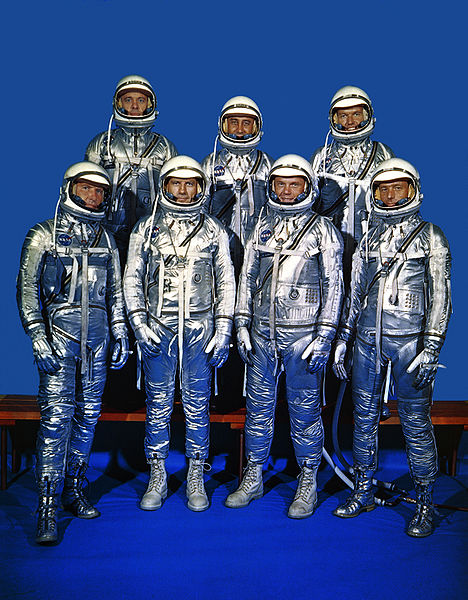
Fifty-one years ago this month, NASA held a press conference in Washington, D.C. to introduce the seven men selected to be Project Mercury Astronauts. They would become known as the Mercury Seven or Original Seven.
Project Mercury was America’s first manned spaceflight program. The overall objective of Project Mercury was to place a manned spacecraft in Earth orbit and bring both man and machine safely home. Project Mercury ran from 1959 to 1963.
The men who would ultimately become Mercury Astronauts were among a group of 508 military test pilots originally considered by NASA for the new role of astronaut. The group of 508 candidates was then successively pared to 110, then 69 and finally to 32. These 32 volunteers were then subjected to exhaustive medical and psychological testing.
A total of 18 men were still under consideration for the astronaut role at the conclusion of the demanding test period. Now came the hard part for NASA. Each of the 18 finalists was truly outstanding and would be a worthy finalist. But there were only 7 spots on the team.
On Thursday, 09 April 1959, NASA publicly introduced the Mercury Seven in a special press conference held for this purpose at the Dolley Madison House in Washington, D.C. The men introduced to the Nation that day will forever hold the distinction of being the first official group of American astronauts. In the order in which they flew, the Mercury Seven were:
Alan Bartlett Shepard Jr., United States Navy. Shepard flew the first Mercury sub-orbital mission (MR-3) on Friday, 05 May 1961. He was also the only Mercury astronaut to walk on the Moon. Shepherd did so as Commander of Apollo 14 (AS-509) in February 1971. Alan Shepard died from leukemia on 21 July 1998 at the age of 74.
Vigil Ivan Grissom, United States Air Force. Grissom flew the second Mercury sub-orbital mission (MR-4) on Friday, 21 July 1961. He was also Commander of the first Gemini mission (GT-3) in March 1965. Gus Grissom might very well have been the first man to walk on the Moon. But he died in the Apollo 1 Fire, along with Astronauts Edward H. White II and Roger Chaffee, on Friday, 27 January 1967. Gus Grissom was 40 at the time of his death.
John Herschel Glenn Jr., United States Marines. Glenn was the first American to orbit the Earth (MA-6) on Thursday, 22 February 1962. He was also the only Mercury Astronaut to fly a Space Shuttle mission. He did so as a member of the STS-95 crew in October of 1998. Glenn was 77 at the time and still holds the distinction of being the oldest person to fly in space. John Glenn will be 89 in July 2010.
Malcolm Scott Carpenter, United States Navy. Carpenter became the second American to orbit the Earth (MA-7) on Thursday, 24 May 1962. This was his only mission in space. Carpenter subsequently turned his attention to under-sea exploration and was an aquanaut on the United States Navy SEALAB II project. Scott Carpenter will be 85 in May 2010.
Walter Marty Schirra Jr., United States Navy. Schirra became the third American to orbit the Earth (MA-8) on Wednesday, 03 October 1962. He later served as Commander of Gemini 6A (GT-6) in December 1965 and Apollo 7 (AS-205) in October 1968. Schirra was the only Mercury Astronaut to fly Mercury, Gemini and Apollo space missions. Wally Schirra died from a heart attack in May 2007 at the age of 84.
Leroy Gordon Cooper Jr., United States Air Force. Cooper became the fourth American to orbit the Earth (MA-9) on Wednesday, 15 May 1963. In doing so, he flew the last and longest Mercury mission (22 orbits, 34 hours). Cooper was also Commander of Gemini 5 (GT-5), the first long-duration Gemini mission, in August 1965. Gordo Cooper died from heart failure in October 2004 at the age of 77.
Donald Kent Slayton, United States Air Force. Slayton was the only Mercury Astronaut to not fly a Mercury mission when he was grounded for heart arrythemia in 1962. He subsequently served many years on Gemini and Apollo as head of astronaut selection. He finally got his chance for spaceflight in July 1975 as a crew member of the Apollo-Soyuz mission (ASTP). Deke Slayton died from brain cancer in June of 1993 at the age of 69.
History records that the Mercury Seven was the only group of NASA astronauts that had a member that flew each of America’s manned spacecraft (i.e, Mercury, Gemini, Apollo and Shuttle). Though just men and imperfect mortals, we salute each of them for their genuinely heroic deeds and unique contributions made to the advancement of American manned spaceflight.
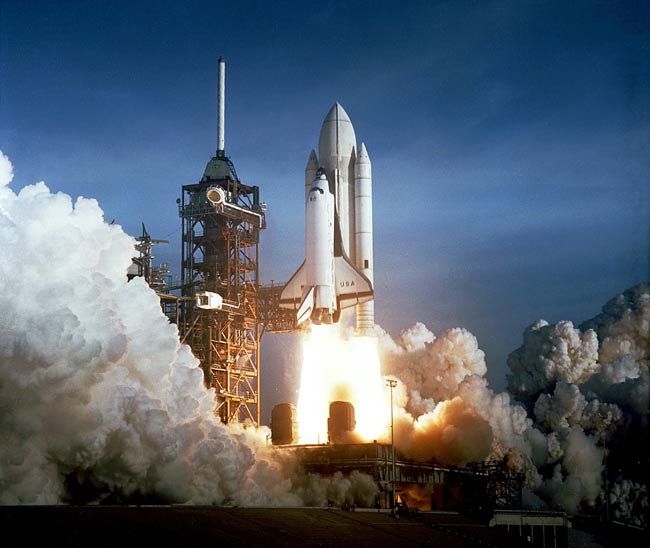
Twenty-nine years ago today, the United States successfully launched the Space Shuttle Columbia into orbit about the Earth. It was the maiden flight of the Nation’s Space Transportation System (STS).
The Space Shuttle was unlike any manned space vehicle ever flown. A giant aircraft known as the Orbiter was side-mounted on a huge liquid-propellant stage called the External Tank (ET). Flanking opposing sides of the ET was a pair of Solid Rocket Boosters (SRB). The Orbiter, SRB’s and ET measured 122 feet, 149 feet and 154 feet in length, respectively.
The Space Shuttle system was conceived with an emphasis on reusability. Each Orbiter (Columbia, Challenger, Atlantis, Discovery and Endeavor) was designed to fly 100 missions. Each SRB was intended for multiple mission use as well. The only single-use element was the ET since it was more cost effective to use a new one for each flight than to recover and refurbish a reusable version.
NASA called STS-1 the boldest test flight in history. Indeed, the STS-1 mission marked the first time that astronauts would fly a space vehicle on its inaugural flight! STS-1 was also the first time that a manned booster system incorporated solid rocket propulsion. Unlike liquid propellant rocket systems, once ignited, the Shuttle’s solid rockets burned until fuel exhaustion.
And then there was the Orbiter element which had its own new and flight-unproven propulsion systems. Namely, the Space Shuttle Main Engines (SSME) and Orbital Maneuvering System (OMS). Each of the three (3) SSME’s generated 375,000 pounds of thrust at sea level. Thrust would increase to 475,000 pounds in vacuum. Each OMS rocket engine produced 6,000 pounds of thrust in vacuum.
The Orbiter was also configured with a reusable thermal protection system (TPS) which consisted of silica tiles and reinforced carbon-carbon material. The TPS for all previous manned space vehicles utilized single-use ablators. Would the new TPS work? How robust would it be in flight? What post-flight care would be needed? Answers would come only through flight.
To add to the “excitement” of first flight, the Orbiter was a winged vehicle and would therefore perform a hypersonic lifting entry. The vehicle energy state would have to be managed perfectly over the 5,000 mile reentry flight path from entry interface to runway touchdown. Since the Orbiter flew an unpowered entry, it would land dead-stick. There would only be one chance to land.
On Sunday,12 April 1981, the Space Shuttle Columbia lifted-off from Pad 39A at Cape Canaveral, Florida. Official launch time was 12:00:03 UTC. The flight crew consisted of Commander John W. Young and Pilot Robert L. Crippen. Their Columbia launch stack tipped the scales at 4.5 million pounds and thundered away from the pad on over 7 million pounds of thrust.
Columbia went through maximum dynamic pressure (606 psf) at Mach 1.06 and 26.5 KFT. SRB separation occurred 120 seconds into flight at Mach 3.88 and 174,000 feet; 10,000 feet higher than predicted. This lofting of the ascent trajectory was later attributed to unmodeled plume-induced aerodynamic effects in the Orbiter and ET base region.
Following separation, Columbia rode the ET to burnout at Mach 21 and 389.7 KFT. Following ET separation, Columbia’s OMS engines were fired minutes later to achieve a velocity of 17,500 mph and a 166-nautical mile orbit.
Young and Crippen would orbit the Earth 37 times before coming home on Tuesday, 14 April 1981. In doing so, they successfully flew the first hypersonic lifting reentry from orbit. Though unaware of it at the time, the crew came very close to catastrophe as the Orbiter’s body flap had to be deflected 8 degrees more than predicted to maintain hypersonic pitch control.
The reason for this “hypersonic anomaly” was that ground test and aero modeling had failed to capture the effects of high temperature gas dynamics on Orbiter pitch aerodynamics. Specifically, the vehicle was more stable in hypersonic flight than had been predicted. This necessitated greater nose-down body flap deflections to trim the vehicle in pitch. It was a close-call. But Columbia and its crew lived to fly another day.
Columbia touched-down at 220 mph on Runway 23 at Edwards Air Force Base, California at 18:20:57 UTC. Young and Crippen were euphoric with the against-the-odds success of the Space Shuttle’s first mission.
NASA too reveled in the Shuttle’s accomplishment. And so did America. This was the country’s first manned space mission since 1975. The longest period of manned spaceflight inactivity ever in the Nation’s history.
Fittingly, a well-known national news magazine celebrated Columbia’s success with a headline which read: “America is Back!”
And while it flies no more, we remember that first Orbiter, its first flight and its many subsequent accomplishments. To which we say: Hail Columbia!
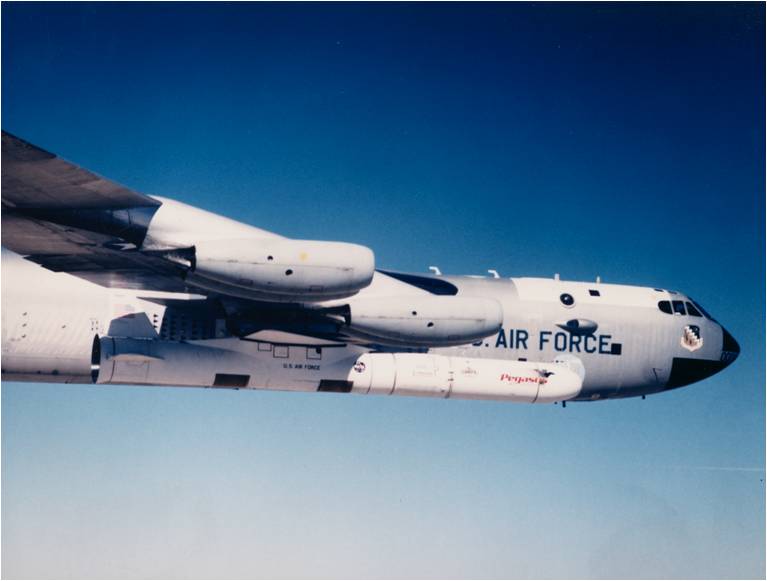
Twenty-years ago today, the Orbital Sciences Corporation (OSC) orbited a PegSat satellite using the then-new Pegasus 3-stage launch vehicle. This historic event marked the first successful implementation of the air-launched satellite launcher concept.
The concept of air-launch dates back to the 1940’s and the early days of United States X-plane flight research. A multi-engine aircraft known as the mothership was employed to transport a smaller test aircraft to altitude. The test aircraft was subsequently dropped from the mothership and went on to conduct the flight research mission.
A clear benefit of air-launch was that all of the fuel and propulsion required to get to the drop point was provided by the mothership. Thus, the test aircraft was allowed to use all of its own fuel for the flight research mission proper. In that sense, the mothership-test aircraft combination functioned as a two-stage launch vehicle.
The value and efficacy of the air-launch concept was demonstrated on numerous X-plane programs. Flight research aircraft such as the Bell XS-1, Bell X-1A, Bell X-1E, Bell X-2, Douglas D-558-II, and North American X-15 were all air-launched. More recently, the X-43A and X-51A scramjet-powered flight research vehicles also employed the air-launch concept.
An added benefit of the air-launch technique is that the launch site is highly portable! This provides enhanced mission flexibility compared to fixed position launch sites. The associated operating costs are much lower for the air-launched concept as well.
Orbital Science’s original Pegasus launch vehicle configuration was designed to fit within the dimensional envelope of the X-15. The standard Pegasus configuration measured 50 feet in length and had a wingspan of 22 feet. The same dimensions as the baseline X-15 rocket airplane. Pegasus body diameter and launch weight were 50 inches and 41,000 pounds, respectively.
A key design feature of the Pegasus 3-stage launch vehicle configuration was the vehicle’s trapezodal-planform wing which provided the aerodynamic lift required to shape the endoatmospheric portion of the ascent flight path. This made Pegasus even more X-15-like.
The real difference between Pegasus and the X-15 was propulsion. The X-15 performed a sub-orbital mission using an XLR-99 liquid rocket engine rated at 57,000 pounds of sea level thrust. Pegasus used a combination of three (3) Hercules solid rocket motors to perform an orbital mission. The 1st, 2nd and 3rd stage rocket motors were rated at 109,000, 26,600 and 7,800 pounds of vacuum thrust, respectively.
On Thursday, 05 April 1990, the first Pegasus launch took place over the Pacific Ocean within an area known as the Point Arguello Western Air Drop Zone (WADZ) . Pegasus 001 fell away from its NASA B-52B (S/N 52-0008) mothership at 19:10 UTC as the pair flew at Mach 0.8 and 43,000 feet. Pegasus first stage ignition took place 5 seconds after drop.
Following first stage ignition, the Pegasus executed a pull-up to begin the trip upstairs. The second and third stage rocket motors fired on time. The stage separation and payload fairing jettison events worked as planned. Roughly 10 minutes after drop, the 392-pound PegSat payload arrived in a 315 mile x 249 mile elliptical orbit.
Since that triumphant day in April 1990, both the Pegasus launch vehicle configuration and mission have grown and matured. Of a total of 40 official Pegasus missions to date, 37 have been flown successfully.
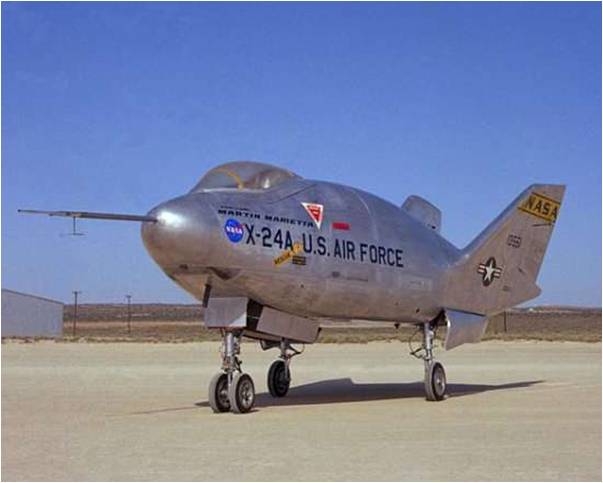
Thirty-nine years ago today, the USAF/NASA X-24A lifting body was flown to a speed of 1,036 mph (Mach 1.6) by NASA Research Pilot John Manke. It was the fastest flight of the rocket-powered lifting body.
A lifting body is an unconventional aircraft in that the vehicle generates lift without the benefit of a wing. Rather, the aircraft produces lift by the manner in which its fuselage is shaped.
In the early days of manned spaceflight, there were two schools of thought regarding the preferred mode of entry from orbital flight. One camp favored ballistic entry where the predominant flight force was aerodynamic drag. This was in contradistinction to lifting entry where both aerodynamic lift and drag forces were generated.
Ballistic entry is the more simple approach, but affords little control of the endoatmospheric flight path. This stems from the fact that the landing point for a ballistic entry is largely dictated by the entry vehicle’s velocity and flight path angle at entry interface.
While operationally more complicated, lifting entry provides a positive means for controlling the entry vehicle’s flight path and thus its landing point. At hypersonic speeds, even a small amount of lift markedly enhances entry vehicle downrange and crossrange capability.
Part of the complication of designing a lifting entry vehicle stems from the need to deal with high levels of heating during entry flight. The vehicle’s shape not only dictates its aerodynamic capabilities, but its aerodynamic heating characteristics as well. Thus, issues of flight path control and airframe survivability are interrelated.
The heyday of lifting body flight research spans the period from 1963 to 1975. For the record, the lifting bodies flown in that era include the following vehicles: M2-F1, M2-F2, M2-F3, HL-10, X-24A and X-24B. Each of these aircraft were piloted. All lifting body flight research was conducted at Edwards Air Force Base, California.
The X-24A was developed by the Martin Company under contract to the United States Air Force. A single X-24A was produced. It measured 24.5 feet in length and had a gross weight of 11,450 pounds. Airframe empty weight was 6,300 pounds.
Though unconventional in shape, the X-24A incorporated full 3-axis flight controls. The aircraft was powered by the venerable XLR-11 rocket motor. This four-chambered propulsion system was rated at 8,500 pounds of sea level thrust. Maximum burn time was on the order of 140 seconds. All landings were conducted deadstick.
The X-24A displayed generally good handling characteristics, but had to be flown precisely. Angle-of-attack had to be maintained between about 4 and 12 degrees. Flight at lower and higher angles-of-attack encountered undesirable aerodynamic control and cross-coupling characteristics.
On Monday, 29 March 1971, X-24A (S/N 66-13551) fell away from the B-52B mothership in an effort to fly a maximum speed mission. NASA research pilot John Manke was at the controls. Manke accelerated the aircraft in a climb and reached a record speed of 1,036 mph (Mach 1.6). Interestingly, it was John Manke who had previously flown the X-24A to its highest altitude of 71,407 feet on 27 October 1970.
The X-24A, like all of the lifting bodies, contributed significantly to the decision to land the Space Shuttle Orbiter deadstick. The lifting bodies, as well as X-aircraft such as the X-1, X-2, and X-15, proved conclusively that an aircraft could reliably (1) manage its energy state and (2) precisely control touchdown point in an unpowered state.
The X-24A flew a total of 28 flight research missions. Following its final flight, the X-24A was then converted to the radically different-appearing X-24B configuration which flew 36 times. Today, the X-24B is displayed in a place of honor in the United States Air Force Museum at Wright-Patterson Air Force Base in Dayton, Ohio.
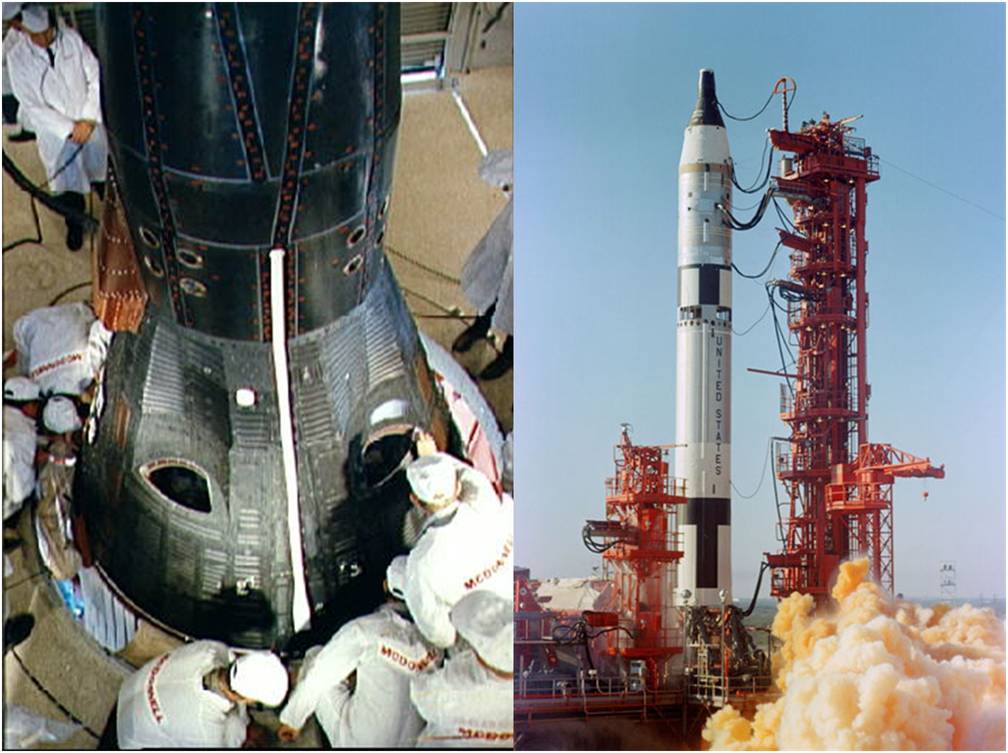
Forty-five years ago this week, Gemini III was launched into Earth orbit with astronauts Vigil I. Grissom and John W. Young onboard. The 3-orbit mission marked the first time that the United States flew a multi-man spacecraft.
Project Mercury was America’s first manned spaceflight series. Project Apollo would ultimately land men on the Moon and return them safely to the Earth. In between these historic spaceflight efforts would be Project Gemini.
The purpose of Project Gemini was to develop and flight-prove a myriad of technologies required to get to the Moon. Those technologies included spacecraft power systems, rendezvous and docking, orbital maneuvering, long duration spaceflight and extravehicular activity.
The Gemini spacecraft weighed 8,500 pounds at lift-off and measured 18.6 feet in length. Gemini consisted of a reentry module (RM), an adapter module (AM) and an equipment module (EM).
The crew occupied the RM which also contained navigation, communication, telemetry, electrical and reentry reaction control systems. The AM contained maneuver thrusters and the deboost rocket system. The EM included the spacecraft orbit attitude control thrusters and the fuel cell system. Both the AM and EM were used in orbit only and discarded prior to entry.
Gemini-Titan III (GT-3) lifted-off at 14:24 UTC from LC-19 at Cape Canaveral, Florida on Tuesday, 23 March 1965. The two-stage Titan II launch vehicle placed Gemini 3 into a 121 nautical mile x 87 nautical mile elliptical orbit.
Gemini 3’s primary objective was to put the maneuverable Gemini spacecraft through its paces. While in orbit, Grissom and Young fired thrusters to change the shape of their orbital flight path, shift their orbital plane, and dip down to a lower altitude. Gemini 3 was also the first time that a manned spacecraft used aerodynamic lift to change its entry flight path.
As spacecraft commander, Gus Grissom named his cosmic chariot The Molly Brown in reference to a then-popular Broadway show; “The Unsinkable Molly Brown”. Grissom chose the moniker in memory of his first spaceflight experience wherein his Liberty Bell 7 Mercury spacecraft sunk in almost 17,000 feet of water during post-splashdown operations.
At almost two (2) hours into the mission, pilot John Young presented Grissom with his favorite sandwich which had been smuggled onboard. Grissom and Young took a bite of the corned beef sandwich and put it away since loose crumbs could get into spacecraft electronics with catastrophic results. Not amused, NASA management reprimanded the crew after the mission.
Gemini 3 splashed-down in the Atlantic Ocean at 19:16:31 UTC following a 3 orbit mission. The spacecraft landed 45 nautical miles short of the intended splashdown point due to a misprediction of aerodynamic lift. Although hot and sea-sick, Grissom refused to open the spacecraft hatches until the recovery ship USS Intrepid came on station.
Nine (9) additional Gemini space missions would follow the flight of Gemini 3. Indeed, the historical record shows that the Gemini Program would fly an average of every two (2) months by the time Gemini XII landed in December 1966. During that period, the United States would take the lead in the race to the Moon that it would never relinquish.
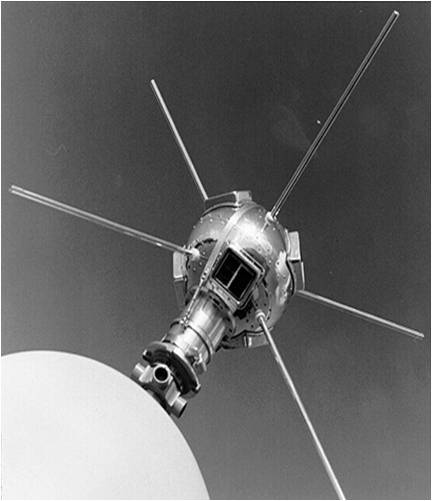
Fifty-two years ago this week, the United States Navy Vanguard Program registered its first success with the orbiting of the Vanguard 1 satellite. The diminutive orb was the fourth man-made object to be placed in Earth orbit.
The Vanguard Program was established in 1955 as part of the United States involvement in the upcoming International Geophysical Year (IGY). Spanning the period between 01 July 1957 and 31 December 1958, the IGY would serve to enhance the technical interchange between the east and west during the height of the Cold War.
The overriding goal of the Vanguard Program was to orbit the world’s first satellite sometime during the IGY. The satellite was to be tracked to verify that it achieved orbit and to quantify the associated orbital parameters. A scientific experiment was to be conducted using the orbiting asset as well.
Vanguard was managed by the Naval Research Laboratory (NRL) and funded by the National Science Foundation (NSF). This gave the Vanguard Program a distinctly scientific (rather than military) look and feel. Something that the Eisenhower Administration definitely wanted to project given the level of Cold War tensions.
The key elements of Vanguard were the Vanguard launch vehicle and the Vanguard satellite. The Vanguard 3-stage launch vehicle, manufactured by the Martin Company, evolved from the Navy’s successful Viking sounding rocket. The Vanguard satellite was developed by the NRL.
On Friday, 04 October 1957, the Soviet Union orbited the world’s first satellite – Sputnik I. While the world was merely stunned, the United States was quite shocked by this achievement. A hue and cry went out across the land. How could this have happened? Will the Soviets now unleash nuclear weapons on us from space? And most hauntingly – where is our satellite?
In the midst of scrambling to deal with the Soviet’s space achievement, America would receive another blow to the national solar plexus on Sunday, 03 November 1957. That is the day that the Soviet Union orbited their second satellite – Sputnik II. And this one even had an occupant onboard; a mongrel dog name Laika.
The Vanguard Program was uncomfortably in the spotlight now. But it really wasn’t ready at that moment to be America’s response to the Soviets. After all, Vanguard was just a research program. While the launch vehicle was developing well enough, it certainly was not ready for prime time. The Vanguard satellite was a new creation and had never been used in space.
History records that the first American satellite launch attempt on Friday, 06 December 1957 went very badly. The launch vehicle lost thrust at the dizzying height of 4 feet above the pad, exploded when it settled back to Earth and then consumed itself in the resulting inferno. Amazingly, the Vanguard satellite survived and was found intact at the edge of the launch pad.
Faced with a quickly deteriorating situation, America desperately turned to the United States Army for help. Wernher von Braun and his team at the Army Ballistic Missile Agency (ABMA) responded by orbiting Explorer I on Friday, 31 January 1958. America was now in space!
The Vanguard Program regrouped and attempted to orbit a Vanguard satellite on Wednesday, 05 February 1958. Fifty-seven seconds into flight the launch vehicle exploded. Vanguard was now 0 for 2 in the satellite launching game. Undeterred, another attempt was scheduled for March.
Monday, 17 March 1958 was a good day for the Vanguard Program and the United States of America. At 12:51 UTC, Vanguard launch vehicle TV-4 departed LC-18A at Cape Canaveral, Florida and placed the Vanguard I satellite into a 2,466-mile x 406-mile elliptical orbit. On this Saint Patrick’s Day, Vanguard registered its first success and America had a second satellite orbiting the Earth.
Whereas the Soviet satellites weighed hundreds of pounds, Vanguard I was tiny. It was 6.4-inches in diameter and weighed only 3.25 pounds. Soviet Premier Nikita Khrushchev mockingly referred to it as America’s “grapefruit satellite”. Small maybe, but mighty as well. Vanguard I went on to record many discoveries that helped write the book on spaceflight.
Khrushchev is gone and all of those big Sputniks were long ago incinerated in the fire of reentry. Interestingly, the “grapefruit satellite” is still in space and is the oldest satellite in Earth orbit. Vanguard I has completed roughly 200,000 Earth orbits and traveled 5.7 billion nautical miles since 1957. It is expected to stay in orbit for another 200 years. Not bad for a grapefruit.
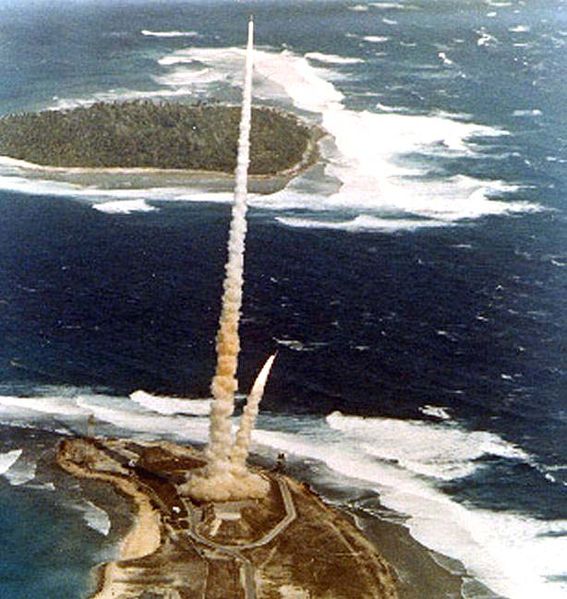
Thirty-nine years ago this month, a pair of SPRINT ABM interceptors fired from the Kwajalein Missile Range intercepted a reentry vehicle launched from Vandenberg Air Force Base, California. It was the first salvo launch of the legendary hypersonic interceptor.
The Safeguard Anti-Ballistic Missile (ABM) System was developed between the mid-960’s and mid-1970’s to protect United States ICBM sites. Safeguard consisted of an exoatmospheric missile (Spartan) and an endoatmospheric interceptor (SPRINT). In today’s missile defense paralance, we would refer to these vehicles as mid-course and terminal phase interceptors, respectively.
The 3-stage Spartan measured 55 feet in length, weighed 28,700 pounds at launch and had a range of 465 miles. Vehicle maximum velocity was in excess of 4,000 ft/sec. Spartan was armed with a 5-megaton nuclear warhead. Target destruction was effected via neutron flux.
The Solid Propellant Rocket INTerceptor (SPRINT) missile was a 2-stage vehicle. It measured 27 feet in length, weighed 7,500 pounds at launch and had a maximum range of 25 miles. SPRINT was configured with a nuclear warhead that had a yield on the order of several kilotons. Target destruction was also via radiation kill.
SPRINT’s performance was astounding by any measure. One second after first stage rocket motor ignition, the vehicle was already a mile away from the launch site. The Mach 5 stage separation event occurred a little over 1.2 seconds from first stage ignition.
The SPRINT upper stage saw a peak acceleration of 100 g’s and reached Mach 10 in about 6 seconds. Maximum mission duration was 15 seconds.
SPRINT’s rapid velocity build-up produced a correspondingly rapid rise in the vehicle’s surface temperature due to aerodynamic heating. The second stage glowed incandescently in daylight as its surface temperature exceeded that of an acetylene torch. The severe thermal state also resulted in the shock layer flow near the missile’s surface becoming a partially-ionized plasma.
SPRINT electromechanical and electronic equipment had to be ruggedized to handle the extreme shock, vibration, and acceleration environment of flight. In addition, the vehicle was hardened to withstand the severe pressure and electromagnetic pulses associated with a thermonuclear warhead detonation.
SPRINT flight testing started at White Sands Missile Range (WSMR) in November of 1965. Devoted to SPRINT subsystem testing, the WSMR flight test campaign ended in August 1970 and consisted of 42 shots.
Overall Safeguard system testing was conducted at the Kwajalein Missile Range (KMR) beginning in 1970 and extended through 1973. The KMR flight test program consisted of 34 flight tests. The first successful SPRINT intercept of a reentry vehicle took place in December 1970.
On Wednesday, 17 March 1971, SPRINT interceptors FLA-49 and FLA-50 were launched in salvo from Meck Island located on the eastern edge of the Kwajalein Atoll. The target for this mission was a Minuteman I reentry vehicle launched 4,800 miles to the east at Vandenberg Air Force Base. The target was successfully engaged and destroyed.
In October of 1974, a single Safeguard System unit became operational at Grand Forks Air Force Base, North Dakota. Interestingly, by February 1976, this lone deployed unit would be permanently deactivated. Thus ended the Safeguard ABM Program. A combination of high costs, questionable efficacy, lack of congressional support and international politics accounted for its very brief operational life.











